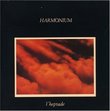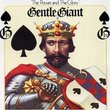| All Artists: Cathedral Title: Stained Glass Stories Members Wishing: 1 Total Copies: 0 Release Date: 1/20/2004 Genre: Metal Style: Number of Discs: 1 SwapaCD Credits: 1 UPC: 766482769742 |
Search - Cathedral :: Stained Glass Stories
CD DetailsSimilar CDs
|
CD ReviewsA collector's item, a hidden gem...but a masterpiece? Squire Jaco | Buffalo, NY USA | 05/17/2007 (4 out of 5 stars) "(This is a review of the Syn-Phonic label release, not some 2004 re-issue that is listed on this page.) This sole release from the U.S. prog band Cathedral got swallowed up in the sea of disinterest that started brewing against prog in general in the late 1970's. Recorded in 1978, and re-released on the Syn-Phonic label around 1990, this hard-to-find cd has frequently been mentioned in the same breath as cd's from other similarly obscure American bands such as Yezda Urfa, Mirthrandir, Hands, and I might add Arabesque. This 45-minute gem is comprised of 5 songs in the 6-12 minute range, mostly driven along by aggressive Chris Squire-like bass lines, and complex polyrhythmic drums and percussion. The music is frequently in the Yes "Relayer" style, with great Howe-like guitar lines, and decent keyboards that focus more on mellotron and string synths than virtuoso soloing. You'll also hear some Gentle Giant and Genesis influences (but you'll also hear here what Anglagard must have been spending a lot of THEIR time listening to before they recorded their early 1990's albums!). I'm delighted that I was able to hook up with a copy of this cd a few years back, but it does not come without its share of shortcomings. The vocals are the weakest feature of the group, though I find the singer tolerable (and almost pleasant) when he sings within his range; in a few spots he sounds as if he's straining, and the dissonance of the vocal line can make the listening that much more uneasy in those places. Not a big problem, and certainly not atypical of some of the other groups mentioned above. Not surprisingly though, most reviewers (including myself) tend to enjoy the all-instrumental 7-minute "Gong" more than the other songs here. Also, I have to say that the production is not the greatest. This was probably not recorded in a top-notch studio; the overall sound contains some occasional "murkiness", and suffers from a lack of dynamics and crispness. This is ripe for a nice re-master re-issue. Still, I believe this is an important - if not essential - album for its influence on U.S. (and Swedish!) prog, and I think it's a worthy endeavor for us prog lovers to recall and honor some of these obscure bands that had great musicians with the guts to attempt complex prog in a world that was quickly sinking into disco and punk. Get this if you can find it. I value interesting music that is played and recorded well. This cd's rating was based on: Music quality = 8.4/10; Performance = 8/10; Production = 7/10; CD length = 8/10. Overall score weighted on my proprietary scale = 8.1 ("3-1/2 stars")" Totally essential American prog rock BENJAMIN MILER | Veneta, Oregon | 11/28/2005 (5 out of 5 stars) "Here's a completely obscure prog rock band whose one and only album really deserves to be in your collection. This band, apparently from New York, released their one and only album in 1978 on the Delta label. Original LPs don't exactly grow on trees, and if you're to see this on LP, you're much more likely to see the 1989 reissue on Syn-Phonic with totally different artwork. Luckily it also was made available as a CD reissue for those who don't have a turntable or not willing to pay the big money for an original LP copy. The group consisted of guitarist Rudy Perrone, vocalist Paul Seal, drummer Mercury Caronia IV, bassist Fred Callan, and keyboardist Tom Duncourt. If you're familiar with Anglagard and their 1992 album Hybris, you might hear some familiarities in the style of Cathedral. Anglagard didn't hide the fact that Stained Glass Stories had a big impact on that band. Of course the big thing missing on Stained Glass Stories is the Nordic influences, of course, since they were American, rather than Swedish. Cathedral went full-on British-style prog. Doncourt really laid it on thick with Mellotron, it's completely all over this album, he also played Hammond organ and electric piano. The most dominant tron sound here is the choir. Guitarist Rudy Perrone alternated between more acoustic styles and electric styles, not unlike Steve Hackett, while Fred Callan really laid it on thick with the Rickenbacker bass. There's also plenty of Moog Taurus bass pedals used throughout the album. The album starts off with "Introspect", which demonstrated that this band, like Anglagard some decade and a half later, would play one thing and go on to the next, going through many different changes, alternating between quiet and loud passages, going for the ensemble playing, rather than each band member trying to out-solo each other (Cathedral preferred each band member play together to avoid the spotlight, something Anglagard later did). While Anglagard tended to only occasionally used vocals (and it was in their native Swedish), Paul Seal tended to sing a lot more, in a rather dramatic style (I noticed a lot of these American proggers tended to have rather dramatic vocalists, check out Fireballet's Jim Cuomo, for example). "Gong" was the album's only instrumental cut, once again showing the high quality of the album. "The Crossing" has an almost Gentle Giant-like feel to it. "Days and Changes" shows that the band hadn't let up for anything. "The Crossing" is the only cut on the album where perhaps it dragged on a bit, but still not bad. Cathedral's Stained Glass Stories is truly not only one of the greatest prog rock albums ever released in 1978, but one of the greats of prog rock, period. It's hard to believe anyone pulled off such a great album in an era where punk rock, disco and AOR were king, where the major prog rock acts like Yes, ELP and Genesis were starting to release what many regard were their worst albums in their careers (Tormato, Love Beach, ...And Then There Were Three...), not to mention Gentle Giant releasing Giant For a Day, again another album regarded as a career low-point. Also, it's not too surprising that Stained Glass Stories should be Cathedral's only album. There was no way they could top that album, for one thing, and the decline of prog was the reason why this great band had to throw in the towel. But Rudy Perrone did release a far more obscure solo album in 1981 called Oceans of Art, but few had heard that one (me included), but aside from that, little has been heard of the band since. Any prog rock fan should own a copy of Stained Glass Stories." Meaningless comparisons - this is a high quality, uniquely s Christopher | Florida, USA | 01/30/2008 (5 out of 5 stars) "Before listening, I looked around online and read in more than twenty reviews that Cathedral was basically just another American 'Yes clone.' I also read that the material on Stained Glass Stories is also heavily influenced by Genesis and ELP. These reviews gave me the impression that Cathedral was just another 70's American prog-rock casualty that couldn't break out of the British mold to forge their own identity. Regardless of whatever reasons killed the band's success, I disagree with those ideas for several reasons.
First of all, I think genre designations are stupid. What is "progressive" music anyway? This is a heavy rock band that plays more complex compositions on bass, drums, guitar, and organ. The pieces are slightly longer in duration (definitely a plus) and have some jazz and classical influences, which separate their style of music from, say, the Yardbirds. The melodies do not wander and lose focus; they are tight throughout. Regarding the Yes influences, perhaps this comparison stems from Wakeman & Emerson's use of synths and the Hammond organ. Yes and ELP were enormously popular groups using a distinctive organ/snyth driven sound, and so when you hear someone else using those instruments to play longer, symphonic-jazzed up pieces or rock music, you might be compelled to make such a comparison. However, this comparison breaks down under closer analysis because the song structures have more in common with King Crimson's Lark's Tongues in Aspic/Islands/Starless and Bible Black than they do with anything done by Yes, Genesis, or ELP. I also mention this point because the bass (heavy, heavy bass lines) are far too aggressive for those bands and resemble more something done by Fripp and crew. The sound of the bass is a gritty growly tone that I like a lot on my on my own Bass. It sounds like he's playing a GK with its characteristic growl and rumble, perhaps another point of comparison with Yes. Still, the comparison is meaningless because it says nothing for the instrumental and songwriting talents of the band members. Production on the album could have used a little polish (money). At times, the vocals are too far out front and you distinguish their separation from the other instruments in the track. I would LOVE to hear a remix/remaster of this album by a good engineer. It would really shine if the drums could be brought to the front a little more, and the vocals/guitars be leveled out and blended in more with the rest of the music. Such changes would make it seem more cohesive because in some spots it does sound rough. This does not affect its listenability! I'm afraid that the master tapes could be lost forever... it may be worth noting that it is an achievement for a band to produce an album this good without the money that Yes, Genesis, ELP had to produce the slick jazzy sound that made them famous. Anyway, if you like this style of music, then buy this album, open the windows, and TURN IT UP. It is not disappointing. Albatross is a Yes clone, now that's disappointing. But Cathedral? No way. I'm impressed. " |




